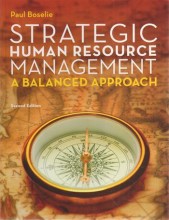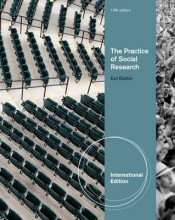Strategic Human Resource Management and Context - illustrations on pfeiffer's seven best practices in practice
17 important questions on Strategic Human Resource Management and Context - illustrations on pfeiffer's seven best practices in practice
What are Pfeffer's zeven best practices in practice?
2. Extensive training
3. Performance-related pay - linked to individual and team performance and yearly bonus.
4. Teamworking with autonomy and self-responsibility.
5. Information sharing and communication - including the importance of CEO's involvement with and commitment to major organizational changes.
6. Reduction of status differences
7. Employment security - in terms of employment benefits.
What are the strengths and weaknesses of the best-practice proposition of Pfeffer?
What is the best-fit proposition?
- Higher grades + faster learning
- Never study anything twice
- 100% sure, 100% understanding
What is concidered as context? And what are the two types of external context?
- Internal context represents the organization's unique history, the administrative heritage and organization culture.
- External context represent reflects the outside organisms that affect the organization or even interact with it, containing market mechanisms and institutional mechanisms.
What are institutional mechanisms and what are the three kinds?
- coercive; coming from laws and procedures.
- Normative; coming from norms and values. E.g. Lawyers job, what should and should not be done.
- Mimetic; result of uncertainties and trends
What do hyper volaturism and hyper determinism mean in terms of institutional context?
How did Paauwe defined market meganism instead of the general market mechanism definition?
Paauwe identified the PMT dimension; products, market and technology.
How does Paauwe call the institutional mechanisms?
Sectors of the external environment
- The general environment: represents the bored external context of an organization
- The business environment: represents the external context of an organization that is directly linked to the population or organizational field, for example the economy, customers, competitors, suppliers
In a Organisational field:
A business strategy exists of 4 Darts
Financial strategy: how can we fund this strategy?
Operational strategy: which supplies do we want to use?
HR strategy: how can we recruit people?
There are 4 kinds of fit in the field of SHRM
- Strategic or vertical fit
- Internal or horizontal fit
- organization fit
- environmental/institutional fit
There are 4 kinds of fit in the field of SHRM
- Strategic or vertical fit
- Internal or horizontal fit
- organization fit
- environmental/institutional fit
The fout linkages Golden and Ramanujam
- An administrative linkage: represents the lowest level of integration. There is (almost) no link between HR strategy and the business strategy.
- A one-way linkage: the HR strategy is derived from the overall business strategy, but the relationship is only one way. So, the business strategy only influences the HR strategy.
- A two-way linkage: the HR strategy influences the overall business strategy and vice versa.
- An integrative linkage: full alignment of HRM and strategy
Envorinmental --> Dimaggio & Powell, organizations are confronted with:
- Market mechanisms: reflect the elements of competition between organizations operating in the same market.
- Institutional mechanisms: mechanisms that stem from legislation, professional norms and limitation as a result of uncertainty or trends.
Envorinmental --> Dimaggio & Powell, organizations are confronted with:
- Market mechanisms: reflect the elements of competition between organizations operating in the same market.
- Institutional mechanisms: mechanisms that stem from legislation, professional norms and limitation as a result of uncertainty or trends.
Institutional mechanisms --> 3 types
2) Normative mechanisms: depending on the professionalization of an employee and its norms and values.
3) Mimetic mechanisms: imitation as a result of uncertainty or fashion trends.
The question on the page originate from the summary of the following study material:
- A unique study and practice tool
- Never study anything twice again
- Get the grades you hope for
- 100% sure, 100% understanding
































